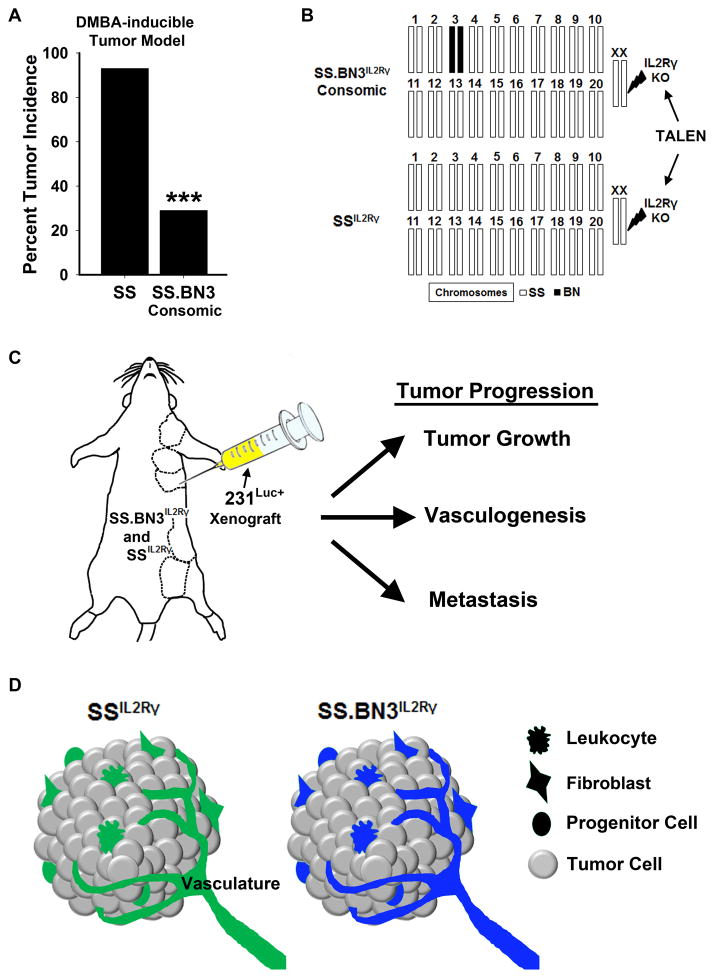Figure 1.
Overview of the Consomic Xenograft Model (CXM). (A) Reduced susceptibility to mammary tumors (DMBA-induced) in SS.BN3 consomic rats (n = 14) compared with SS (n = 40), as reported previously by Adamovic et al (16). ***P<0.001 as determined by Fisher’s exact test using Bootstrap.(B) Schematic representation of the SS and SS.BN3 genomes that were modified by TALEN-mediated editing of the IL2Rγ gene. The numbered bars represent chromosomes that are derived from SS (white) or BN (black). Note that the only genetic differences between SSIL2Rγ and SS.BN3IL2Rγ are the inheritance of chromosome 3 from the SS or BN rats. (C) The transgenically labeled human 231Luc+ breast cancer cells were orthotopically implanted in the MFP (indicated by dashed lines) of SSIL2Rγ and SS.BN3IL2Rγ rats. Tumor progression (e.g., growth, vasculogenesis, and metastasis) were tracked over the duration of the experiment. (D) Because the 231Luc+ tumor cells are the same between strains (gray), any differences in tumor progression can be attributed to differences in the SSIL2Rγ (green) and SS.BN3IL2Rγ (blue) microenvironments.

